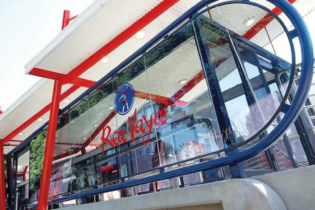Promoting better coordination among border agencies, introducing mandatory pre-arrival customs declaration forms, and establishing an enabling IT system are some of the steps to take for improving efficiency of border crossing in Africa and for lowering the cost of doing business, finds a study just released by the Africa Transport Policy Program (SSATP).
“While investing in infrastructure is essential, this response is often overrated,” explains Olivier Hartmann, co-author of Border Crossing Monitoring along the Northern Corridor and SSATP Senior Transport Specialist. “Our study indicates that software is as important as the hardware it depends on, if not more so. Inter-agency and inter-country cooperation is vital to border reforms and will ultimately not only generate more revenue for countries but also reduce private sector spending.” Increased coordination is the objective of the One-Stop Border Post (OSBP) approach, which is gaining momentum in several regions of Africa. In East Africa, the East Africa Community (EAC), the corridor authorities and their member states have decided to convert all major border posts into OSBPs. One of the main objectives of this decision is to streamline processes and reduce the amount of paperwork and time required to cross the border. The Malaba, Busia (between Kenya and Uganda) and Gatuna / Katuna (between Uganda and Rwanda) border posts constitute the main and busiest border posts along the Northern Corridor, which spans between the port of Mombasa to the landlocked countries and regions of East Africa. The Malaba border post is a pilot in the East Africa OSBP program, with an average of 600 trucks per day crossing the border. This latest SSATP study, done in collaboration with the Secretariat of the Transit and Transport Coordination Authority of the Northern Corridor, presents the outcomes of a survey of the three border posts along the Northern Corridor to establish a baseline prior to the full conversion into OSBP. During the survey period, the customs authorities in Kenya and Uganda modified selected business procedures that resulted in dramatic decrease of the border crossing times.According to the study, crossing times that were routinely taking over 48 hours, have dropped to less than six hours. Average border-crossing time dropped from 24 hours to 4 hours. Based on estimates of the value of time for trucking enterprises and traders, the savings generated by the improvement of the situation amounts to approximately US$ 70 million per year.
These kinds of surveys enable countries to identify what works and what can be improved. “The Africa Transport Policy Program builds the capacity of Regional Economic Communities to monitor corridor performance through Corridor Observatories,” says Jean Noel Guillossou, SSATP Program Manager. “A specific set of indicators is collected that allows for overall assessment and enables countries to identify areas of intervention.” “We are tracking around 25 indicators on a range of issues such as volume, cost, efficiency and productivity,” says Donat M. Bagula, Executive Secretary of the Permanent Secretariat of the Transit Transport Coordination Authority of the Northern Corridor. “We are tracking them to know how we can reduce the cost of doing business and to identify the reasons behind the delays along the corridor.” The survey conducted at the Malaba border crossing captured the impact of some key reforms undertaken by both Kenya and Uganda. “What the evidence shows,” says Hartmann, “is that significant progress does not require a large investment, rather political good will and a legal framework that enables effective cooperation to take place.”






